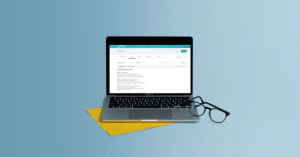Listen on Apple Podcasts Listen on Spotify
This Week’s Episode: Using Language Samples When Evaluating CLD Students
This month I had the pleasure of chatting with Kallie Knight (@kknighttherapy), a school-based SLP, regarding evaluations for culturally and linguistically diverse students.
So far this month we discuss why different types of evaluations are important and different things to consider when taking data for these students. In today’s episode, we share our tips on how to use language samples (the gold standard) when evaluating CLD students.
Stay tuned for the rest of this month’s series as we discuss different types of assessments and tips for taking better evaluations for CLA students.
Let’s get to it!
Key Takeaways + Topics Covered
How to use language samples
🍏Lange samples are the gold standard for ALL evals (syntactic, morphological features)
– Be careful comparing to norms when taking a CLD language sample
– Consider other languages
🍏Collect a sample in both languages
– Bilinguistics book is a great resource!
– Negative transfer error
🍏 This also applies to speech sound disorders! phonology varies across languages
Additional Links
Kallie Knight: @kknighttherapy
ASHA Leaders Project
SLP Now Membership
Bilinguistics
Subscribe & Review in iTunes
Are you subscribed to the podcast? If you’re not, subscribe today to get the latest episodes sent directly to you! Click here to make your listening experience auto-magic and as easy as possible.
Bonus points if you leave us a review over on iTunes → Those reviews help other SLPs find the podcast, and I love reading your feedback! Just click here to review, select “Ratings and Reviews,” “Write a Review,” and let me know what your favorite part of the podcast is.
Thanks so much!
Transcript
Speaker 1: Hello there, and welcome to the SLP Now Podcast, where we share practical therapy tips and ideas for busy speech language pathologists. Grab your favorite beverage and sit back, as we dive into this week's episode.
Speaker 1: Now, we'll dive into language samples. So, last week, Kallie shared some of the common learning opportunities that we might have, when working with culturally and linguistically diverse students. One of the things that she mentioned was using language samples. So, do you want to tell us a little bit about the role that language samples play for you when you're completing these evaluations?
Kallie: For sure. For any evaluation, regardless of whether they're culturally linguistically diverse or not, I'm going to use a language sample because that's just the gold standard. If I want to see, or at least look for different maybe, syntactic morphological function features, the best way to do it is, to hopefully get the kid talking, and get a sample and analyze it.
:
So obviously that's not surprising, but the thing that's a little bit different with our culturally and linguistically diverse students, is simply taking a language sample and then trying to compare it to norms or grammatical structures, syntactic structures from English only, there's a good chance that that child is going to make a lot of errors and if you don't do a comparative type analysis with their first language, you could be seeing a lot of these errors and just say, "Oh, yep. They're making these errors."
Kallie: If you want to MLU, and you length the veterans, "Oh no, it's really short." But it could just be that, for example, in English, it less developed or, again, this kid could have a disorder. But it's hard to tell because if they have a disorder, it's going to show up in both languages, which is why it's so important to do both.
Speaker 1: Perfect. And what tips would you... Because I know this is different for every district. I'm just curious, what does it look like in your district if you have a bilingual student who comes in and speaks the language that you're not familiar with, what are your tips to navigate that?
Kallie: And I'm glad that you said a student whose language you're not familiar with, because I can give you an experience from a Spanish speaking student because I speak Spanish. So for me it's a lot easier to do those evaluations because I can, with fidelity, get a language sample in both languages. I can analyze it and I'm good to go. I am confident. But I actually had a student who spoke some language that I can't remember, but from Africa and I was like, "Yeah, no, I have no idea." And so at that point... And I'll tell you what? I've done... That's been best for me because I certainly don't speak that language. And it would be really nice if you could get an interpreter or a parent or someone who does speak the language. So you can get that language sample. But sometimes you just can't, sometimes you get a language that's just really different, or really not common to your area and you can't get an interpreter, or maybe the parent isn't available.
Kallie: And if you can't get the comparative language analysis, you're not a failure. Later, we'll talk about dynamic assessment. I think that's where the gold is. Let's just say that you have a more common language, maybe Spanish or Mandarin. Usually, you can get someone who either speaks the language or who is an interpreter and they can at least help you facilitate a conversation with the student and then be able to record and transcribe it. And then once you've done that, the coordinating getting that scheduled is often the hard part, but getting it transcribed by the person isn't so hard. What is a little bit harder is the interpreter doesn't know what am I supposed to be analyzing. And so you have to know. And so there's resources like... I think Bilinguistics has a really good book where they have a lot of different languages, and they have different morphological structures, different syntactic structures across different languages.
Kallie: And you can see when you're looking in English, this is an error there might make in English or this is how it compares to their home language. And so you can look for like negative transfer errors and you can say, "Oh, it's likely that this person made an error here because of their first language, a negative transfer error." Not because they have a disorder. For a lot of languages, past tense is often present in both languages. But it may not transfer to English well. And so a lot of times there will be tense errors and for a lot of people are like, "Oh yeah, tense in agreement errors, that's hallmark of a language disorder."
Kallie: And so they'll see a lot of cultural and linguistically students have those errors, but not be able to compare and say, "Oh, but they use it appropriately in their home language." So it's likely a language acquisition, development experience error, not a disability. But it's not clean. Let me just say like it's not clean. It's a lot of gray. You're not always going to know every single time it's going to be, "Oh, that's a negative transfer error." That's that. Sometimes you just have to make your best guess.
Speaker 1: And I think that's why because a language sample typically has multiple opportunities. So we need to look for what are the patterns, and there may be one off errors. But just trying to look at the bigger picture and do the best we can. And I love that you mentioned the Bilinguistics book too as a resource to start navigating that because if you are not familiar with the language, it's very hard to figure out what those negative transfer errors might be. So we'll definitely link to that in the show notes as well. And then is there anything else that you would share in terms of language samples and navigating that?
Kallie: I think I would add on top of this. We're talking about language samples like language disorders. But it also applies speech sound disorders because phonology also varies. So I might throw that in there too, when I say language samples there's that, but you can also do a speech sample and do the same phonological analysis. And in Bilinguistics and in other places you can also compare phonological features of different languages. So I should put that plug in there. It's not just language. It also goes to speech sound disorders. And there are going to be some things in Bilinguistics, some different languages that just are not there. And don't freak out, because if you Google, you can Google phonological features or phenology of another language. It's not going to have it broken down for you where, "This is the exact error they make."
Kallie: But usually linguists will write all about that. And because you understand what they're saying, you can usually see what errors or what rule patterns that language has, and you can still compare it. Don't be worried if you have a language and you do invest in that bilinguistics book, and then realize, "But that language isn't even in the book, what do I do now?" You can still do a good Google search and you have the knowledge to be able to look at some of those linguistics websites that just give all the linguistics knowledge on different languages.
Speaker 1: Yeah. Perfect. Just in terms of productivity and navigating... Because if this is new to an SLP, I'm sure that over time, you've gotten really efficient with all of this. But if this is new to an SLP, that's a lot of different things to think about and that analysis can take a little longer. So do you have any tips, or what does it look like for you just maybe give them a glimpse at what it could look like once this becomes a little bit more streamlined for them?
Kallie: I like this question because you could ask me, "What would it look like ideally versus what can I feasibly get done truly given your workload?" And those are going to differ significantly. What ends up working that I think gives me plenty of information. I don't sit there and probably don't get and transcribe a 150 utterances or more. Would that be ideal? Yes. Would I be able to like plug it into something like SALT and have it give me some good hard data? Yes. But more often than not, I don't even get to transcribing most of it unless it's the language that I don't know. Then I do have to spend a little bit more time.
Kallie: But if it's a language that I do know like Spanish, most of the bilingual evaluations that I do are Spanish speaking students, I can just hear most of it. And I know what to listen for in both languages. So I'm listening in real time and making notes instead of transcribing everything thing they say, but not every person can do that. So I'm going to be honest, if you can't do that, it might take more time just to transcribe a little bit so that you can see it and analyze it. But don't feel like you have to take a million long utterances. You just don't have time. You can probably do 20 or 30, if that, and you'll be okay.
Kallie: The good thing is the language sample while it is a gold standard, is not the end all be all. And you'll likely have other measures to what I like to call, create a triangulation of data. So don't feel like you have to have the best language sample ever because you're going to have other sources of data that can still help support your clinical decision.
Speaker 1: Yeah. And I think if an SLP is newer to using language samples or especially like analyzing them across languages, recording the language samples so that you can just try your best to see if you can hear it just in real time and to work on trying that skill. But then you still have the recording to go back to if you need to, for sure reference. So then that can be like a little bit of a safeguard so there's not as much pressure like, "I must get it all now."
Kallie: Yeah, because that's not realistic. Even sometimes I record it because sometimes you just don't have all your brain cells there. So...
Speaker 1: Yeah. You never know. That's perfect. So I love all of these tips for language samples. We talked about language samples being the gold standard for all evaluations because they give us some really good information about like syntactic and morphological features, all of that good stuff. But when we are working with CLD students, we want to be careful when we're comparing to other norms. And we also want to make sure that we're considering that other language and doing a little bit of a comparative analysis, and like looking for negative transfer errors, like Kallie said. Like if they don't have past tense verbs in the first language, then if they're not using them in the past in English, then that can be an example of that error. Does that sound right?
Kallie: There are just so many, it could be negative transfer or it could be in one language, they don't have a feature in English like in a lot of languages. Past tense is just past tense. But in English we have like past tense ed regular, we have irregular past tense and it's just like... It's ridiculous. So like you said, if you just look at English and try to evaluate it as is that kid's probably going to come out real poor when that may be the case if you compare it to the other language too. But it could totally not be the case.
Speaker 1: Thanks for listening to of the SLP Now Podcast. If you enjoyed this episode, please share with your SLP friends and don't forget to subscribe to the podcast to get the latest episode sent directly to you. See you next time.
Sign up to receive email updates
Enter your name and email address below and I'll send you periodic updates about the podcast.




Reader Interactions